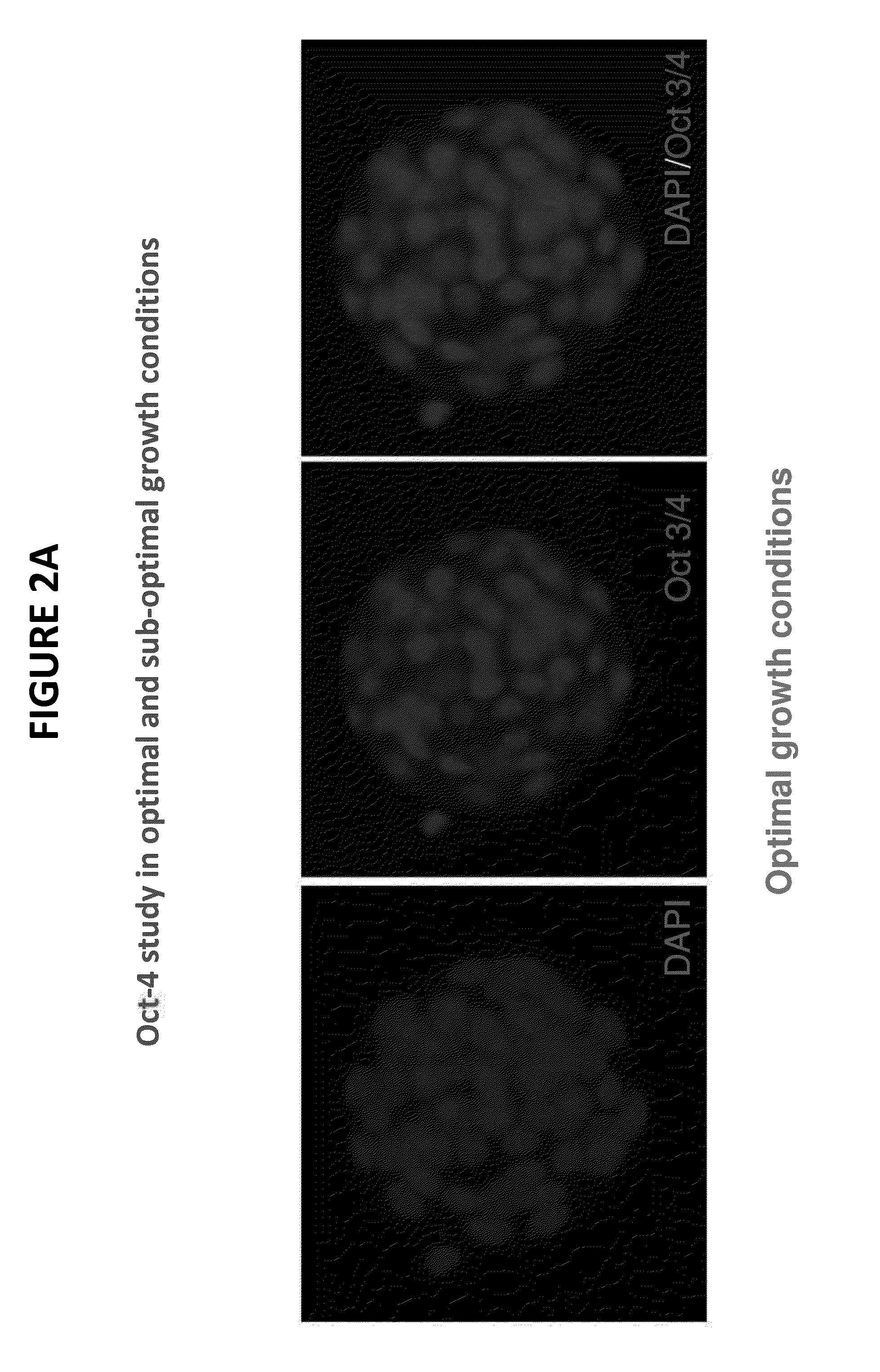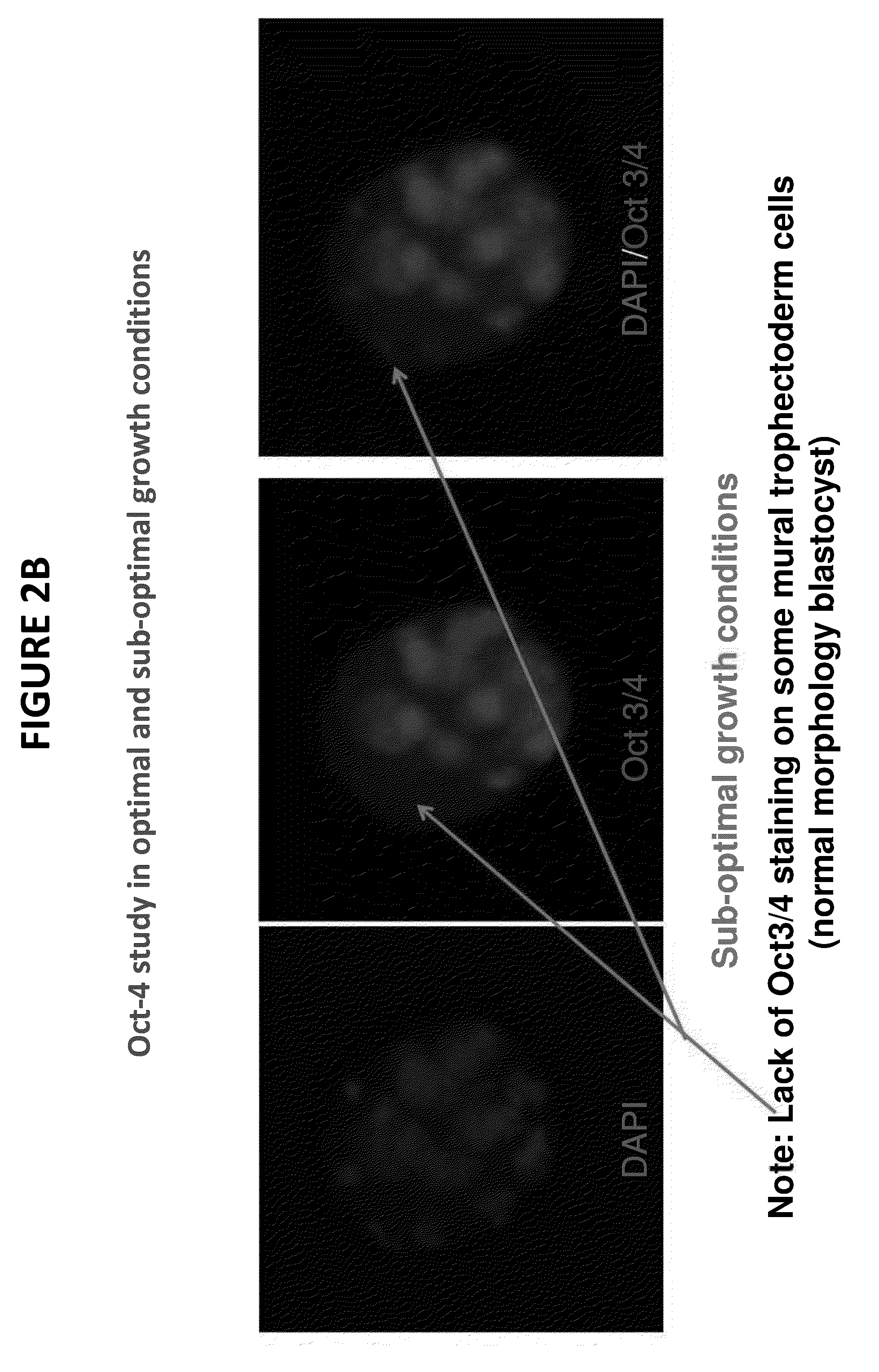Method and quality control molecular based mouse embryo assay for use with in vitro fertilization technology
a applied in the field of method and quality control molecular based mouse embryo assay for use with in vitro fertilization technology, can solve the problems of reducing embryo viability and development impairment, difficult to assess the impact of suboptimal environment using morphology as a marker, and posing significant laboratory challenges.
- Summary
- Abstract
- Description
- Claims
- Application Information
AI Technical Summary
Benefits of technology
Problems solved by technology
Method used
Image
Examples
example 1
OCT-4
[0054]FIG. 1 is a photograph from the fluorescence microscope showing one embodiment of a molecular-based mammalian embryo assay for use in quality control. A mouse embryo with the pluripotency regulator Oct-4 visualized with red fluorescence tag. The 2-cell embryo is cultured in vitro. After approximately 48 hours, the embryos were stained and evaluated via fluororescence microscopy. As is evident from FIG. 1, the embryo on the left, which was incubated under optimal growth conditions, is well developed with uniform staining. By contrast, the blastocyst on the right was incubated in sub-optimal growth conditions. A lack of Oct-4 staining is observed on the right cell of the embryo on the right, demonstrating that the sub-optimal growth conditions result in slower embryonic development.
example 2
OCT-4
[0055]FIGS. 2A and 2B illustrate photographically a molecular-based mouse embryo assay at the blastocyst stage. The embryos were cultured in vitro for 96 hours and stained and observed via a fluorescence microscope. In FIG. 2A, under optimal growth conditions, normal embryo development is observed as demonstrated by the uniform staining. By contrast, in FIG. 2B, the embryos were incubated under sub-optimal growth conditions. A lack of Oct-4 staining on some mural trophectoderm cells is observed in the embryos as noted by the arrows on FIG. 2B. Without the use of the presently claimed technology, the sub-optimal culture conditions would not be evident or identifiable as sub-optimal when using the conventional MEA standard QC protocol because the blastocyst appears to be developing at a normal rate. However, by observing the slow growth in the center and left pictures of FIG. 2B, it is clear that blastocyst development is qualitatively less uniform and less optimal than in the em...
example 3
SOX-2
[0056]FIGS. 3A, 3B, and 3C further demonstrate the superior QC features of the claimed invention. FIGS. 3A-3C are fluorescence microscopy photographs of control murine Embryos were incubated to the blastocyst stage in vitro, stained, and observed microscopically. After 96 hours of culture, the image on the left of FIG. 3A shows an embryo that was fixed and stained with DAPI and observed microscopically to assess growth. The staining pattern observed in the embryo is uniform and evidences normal, healthy blastocyst development under optimal conditions. The center image in FIG. 3A shows the embryo having the SOX-2 viability marker stained with green fluorescence and DAPI. Notice the uniform staining as well as the well-defined differentiation of the blastocyst.
[0057]Turning to FIG. 3B, blastocysts incubated in sub-optimal growth conditions are observed. The picture of FIG. 3B shows a mouse embryo incubated under sub-optimal culture conditions. After 96 hours, the embryo is fixed ...
PUM
| Property | Measurement | Unit |
|---|---|---|
| time | aaaaa | aaaaa |
| time | aaaaa | aaaaa |
| green fluorescent | aaaaa | aaaaa |
Abstract
Description
Claims
Application Information
 Login to View More
Login to View More - R&D
- Intellectual Property
- Life Sciences
- Materials
- Tech Scout
- Unparalleled Data Quality
- Higher Quality Content
- 60% Fewer Hallucinations
Browse by: Latest US Patents, China's latest patents, Technical Efficacy Thesaurus, Application Domain, Technology Topic, Popular Technical Reports.
© 2025 PatSnap. All rights reserved.Legal|Privacy policy|Modern Slavery Act Transparency Statement|Sitemap|About US| Contact US: help@patsnap.com



